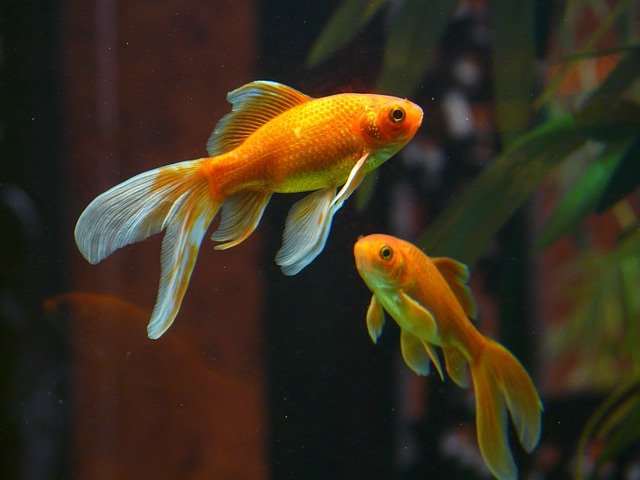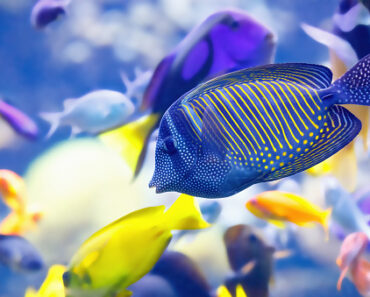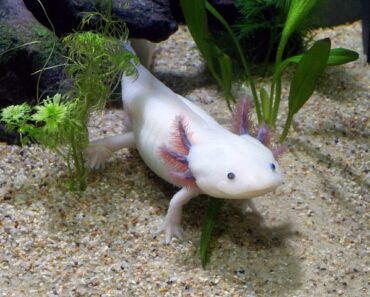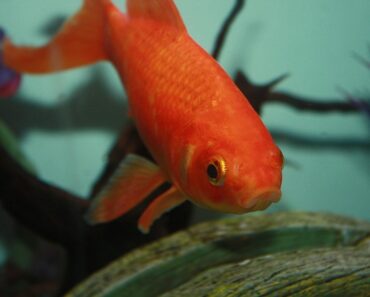
An aquarium is not just a simple pleasure object that we install for the pleasure of the eyes. It is above all a complex ecosystem that is created and lasts for the life of your tank. You manage to create in your aquarium a micro-system similar to the one you could find in the natural environment of your fish.
Of course, an ecosystem cannot create itself within your aquarium, or at least it could not be created in the time allowed (so as not to question the conception of the world) and allow you to install your fish in your tank when you wish. Not having several million years ahead of us, there is often a need to give mother nature a few thumbs up.
The importance of plants is no longer questionable in a natural ecosystem, their contribution is not negligible. It is indeed to her that will be mainly due to the failure or success of your bin and that is why they will need special care. Your planted tank will guarantee a good health of your fish and especially a good oxygenation of the water, plants being sources of oxygen.
The photosynthesis system
Photosynthesis is a complex process of creating green energy that allows plants and certain bacteria to synthesize organic matter from a source of light, often a source of natural light. Living green organisms are therefore able to create organic energy from a light source, which is then integrated into the process of life. Your aquarium is no exception to this and your living plants therefore participate in the creation of your personal ecosystem.
Photosynthesis is the action, for a plant, of releasing dioxygen which allows you to supply your water with elements essential for the life of your fish which need it to survive and feed on oxygen. However, this oxygen is not created from a vacuum. Nature abhors a vacuum and has adapted plants to their environment and as Descartes would say, in their natural state “nothing is lost, nothing is created, everything is transformed. “This adage is, once again, true since for its production of dioxygen the plant will need a contribution in carbon dioxide, water and mineral salts, which you will necessarily find in your aquarium.
Light is an essential element for photosynthesis because it is through it that the nutrients supplied to your plant will be synthesized and allow the creation of the final element you are looking for. Without light you will never achieve photosynthesis, and photosynthesis must be treated with the utmost care because of its importance in the process.
It is important to note that photosynthesis has a double use in your aquarium. First of all, during the nitrogen cycle, it eliminates possible overdoses of elements that are harmful for your fish but useful for your plants, and thus allows a better balance in your aquarium. At the same time, it allows the synthesis of oxygen and thus the life of your fish in your aquarium. The utility is thus double, allowing you to reduce considerably the maintenance of your tank, without having to bring oxygen in an artificial way using a bubbler in particular. However, in order to obtain a good photosynthesis, it is necessary to be attached to the light which is important in aquariophily.
What types of light exist?
There are of course different types of lights, which will be sold in pet stores and which will most often be chosen by consumers for their interesting colors, corresponding to their desires. However, many novice aquarists are unaware of the importance of the color of the light spectrum for the efficiency of photosynthesis. It seems relatively subtle to choose its lighting, given its importance, but especially its diversity.
Concerning the type of light, one must keep in mind that aesthetics does not always rhyme with utility. Indeed, we can see that in many cases white tubes, the most common lights, provide your plants with a much better light than a yellow or actinic tube. This is why you will have to pay a great attention to the spectra composing your light and to their utility for your planter.
How much light should I put in my aquarium?
The types of aquariums are as diverse as they are varied, but there is one point that does not vary and will probably never vary, and that is the amount of light your tank needs. Professionals and various specialists recommend 1 Watt of light for 2 liters of water. This makes an interesting ratio of 1 to 2, corresponding to the essential needs of your plants.
However, it is not always easy to adapt the lighting to the real needs of the plants. It is therefore very often necessary to resort to do-it-yourself projects which are sometimes very difficult to implement and give results that can be quite disappointing. It is much preferable, to any DIY work, to directly change its ramp, or to arrange it with accessories ready to install that you will find in the trade. Since lighting is closely linked to electricity, the aquatic environment in which it is located does not allow for any mistakes.
You will therefore, as you have understood, necessarily have to adapt your lighting to the needs of your bin, taking into account this ratio of 1 to 2. Various products exist and allow you to adapt the power of your lighting often without having to change the ramp, simply by choosing a more powerful lighting. In cases where you could not change your ramp, do not hesitate to opt for plants that do not require much light, which will allow you to keep them healthy. They will then be able to carry out photosynthesis without having to suffer from lack of light.
What type of lighting should I choose?
In addition to the various types of lighting that exist, there are various types of lighting that are, most often, adapted to the needs of consumers, but also to the technical characteristics of your bins. The last few years have seen a trend towards the disappearance of neon to let small bulbs appear, small lighting systems that are just as efficient.
In any case, many aquariums are still supplied with a neon ramp, which is still the most common. Therefore, it is necessary to adapt and make informed decisions. You will then have to adapt your neon(s) to your aquarium’s bedding and in case the manufacturer has not installed enough sockets for the installation of your neon(s) on your ramp, you will have the choice to modify your ramp yourself in order to adapt it to your needs, or to simply look to install another one.
How to make a good photosynthesis?
To achieve a good photosynthesis, it is necessary to take into account that a minimum amount of lighting is required every day. This is why you will need to light your bin for between 10 and 12 hours a day. This lighting will allow your plants to absorb enough carbon dioxide from the water to transform it into oxygen. However, this time is only indicative and you can of course give your aquarium an extra hour each day. However, it is not recommended to reduce this lighting time, which may not allow your plants to perform their role effectively.
To be efficient, the lighting must be done over the time given above without interruption and therefore without cuts during the day. Like a natural day, the sun rises in the morning and sets in the evening. Similarly, there should be no lighting phases during the night, which would disturb the ecosystem of your bin, but also the lives of its inhabitants.
Finally, remember to change at least once a year your neon lights which would no longer be efficient enough to guarantee good lighting quality. Some even recommend changing them every six to eight months. This can be seen mainly in very large bins, with a great depth and when the neon lights have an operating time of more than 12 hours daily.
In order not to lose any of your lighting don’t hesitate to install light reflectors above your neon lights.






